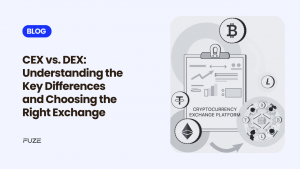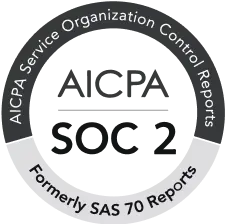In the evolving blockchain technology, crypto staking has emerged as a pivotal use case, transforming how cryptocurrencies contribute to network operations and deliver value to their holders. By locking up tokens to support a blockchain’s Proof-of-Stake (PoS) consensus mechanism, staking enables participants to secure the network, validate transactions, and earn rewards. This innovative approach has not only replaced the energy-intensive Proof-of-Work (PoW) model for many blockchains but has also unlocked new opportunities for crypto holders to actively engage with decentralised systems.
Staking crypto has evolved into more than just a technical function—it’s now a critical utility, driving adoption and fostering a deeper integration between users and blockchain ecosystems. In this guide, we delve into how crypto staking platforms work, their benefits, and the associated risks, offering a comprehensive understanding of this rapidly growing use case and its role in the future of decentralised finance.
What Is Crypto Staking?
Staking is the process of participating in the operation of a blockchain by locking up a certain amount of cryptocurrency. This helps maintain the network’s integrity, provide liquidity, and secure the blockchain. In return, participants (or “stakers”) earn rewards in the form of additional cryptocurrency.
Staking plays a crucial role in maintaining the blockchain’s functionality and security, while also opening doors to additional earning possibilities like yield farming. Yield farming allows users to utilise their staked assets to provide liquidity to decentralised finance (DeFi) protocols, earning extra rewards in return.
Some platforms also offer liquid staking derivatives, tokens that symbolise staked assets, which can be utilised across various DeFi applications, including lending, borrowing, or trading, all without the need to un-stake or withdraw the initially staked assets. This dual functionality enables participants to enhance their earning potential by merging staking rewards with the high-yield opportunities present in the DeFi landscape, making staking an attractive strategy for additional income.
How Do Crypto Staking Platforms Work?
Crypto staking platforms act as intermediaries that simplify the staking process. Instead of directly staking tokens on a blockchain, users can stake through these platforms, which often manage the technical requirements, node operations, and security.
Here’s how they typically work:
- Deposit: Users deposit their cryptocurrency into the platform.
- Aggregation: The platform aggregates funds from multiple users, creating a large staking pool.
- Validation: The staking pool participates in the blockchain’s validation process, earning rewards for securing the network.
- Reward Distribution: The platform distributes the rewards to users proportionally based on their contribution to the pool.
Many platforms also offer staking services for multiple blockchains, making it easier for users to diversify their staking investments.
Types of Crypto Staking Platforms
- Exchange-Based Platforms
Crypto exchanges such as Binance, Coinbase, and Kraken provide staking services, allowing users to stake directly from their trading accounts with ease.
- Dedicated Staking Platforms
Platforms like Lido, Rocket Pool, and Stakefish specialise in staking, often appealing to more experienced users who seek greater control over their staking activities.
- DeFi Staking Platforms
Decentralised Finance (DeFi) platforms, including Aave and PancakeSwap, incorporate staking into their wider range of services, frequently combining it with yield farming and liquidity provision.
- Custodial Staking Platforms
These platforms manage all technical details and ensure guaranteed uptime, but users must place their trust in the platform regarding their private keys.
- Non-Custodial Staking Platforms
These platforms enable users to keep control of their private keys, improving security while still allowing for staking participation.
Benefits of Crypto Staking Platforms
- Passive Income
Staking offers a way to earn passive income by simply holding and staking cryptocurrencies, often yielding annual rewards between 5% and 20%. - Network Contribution
By staking, users play an active role in supporting and securing blockchain networks, fostering decentralisation and innovation. - Ease of Use
Staking platforms handle the complex technical aspects, making it accessible even for non-technical users. - Diverse Options
Platforms often support multiple cryptocurrencies, allowing users to stake various tokens from a single interface. - Liquidity Solutions
Some platforms offer “liquid staking,” where users receive a derivative token representing their staked assets, enabling them to trade or use the value elsewhere without un-staking.
Risks of Crypto Staking Platforms
While staking has many advantages, it’s not without risks. Here are the key factors to consider:
- Price Volatility
Cryptocurrency prices are highly volatile. Even if you earn staking rewards, a significant price drop can negate your gains. - Lock-Up Periods
Some blockchains enforce lock-up periods, during which your assets are inaccessible. This can be a drawback if you need liquidity. - Platform Risks
Custodial staking platforms require users to trust them with their funds. Hacks, mismanagement, or regulatory actions could result in losses. - Slashing Risks
In PoS networks, validators that fail to operate reliably may face penalties, potentially reducing staking rewards or leading to a loss of staked assets. - Inflationary Pressures
Staking rewards are often generated by inflation, meaning the total supply of a cryptocurrency increases over time. This can dilute the value of your holdings. - Smart Contract Vulnerabilities
On DeFi platforms, staking relies on smart contracts. A bug or exploit in the contract code could result in the loss of funds.
How to Choose the Right Crypto Staking Platform
Choosing a staking platform involves careful consideration of your objectives, risk appetite, and personal preferences. Here are some key factors to keep in mind:
- Reputation and Security: Investigate the platform’s history and make sure it has strong security protocols in place to protect user funds.
- Supported Cryptocurrencies: Check if the platform supports the cryptocurrencies you want to stake.
- Fees: Familiarise yourself with the platform’s fee structure, including commission rates and withdrawal fees, as these can affect your overall returns.
- Reward Rates: Compare the reward rates offered by different platforms, but be wary of those promising excessively high returns.
- Lock-Up Periods: Evaluate the staking terms and whether the lock-up periods fit with your investment strategy.
- User Interface: Choose platforms that feature user-friendly interfaces and provide excellent customer support to improve your overall experience.
Best Practices for Using Crypto Staking Platforms
- Diversify Your Staking: Distribute your staking investments across various platforms and cryptocurrencies to reduce risks.
- Stay Updated: Keep an eye on changes in staking conditions, platform policies, and blockchain updates that could impact your rewards or lock-up periods.
- Use Reputable Wallets: For non-custodial staking, opt for trusted wallets to ensure you maintain control of your private keys.
- Secure Your Accounts: Activate two-factor authentication (2FA) and refrain from sharing sensitive information to safeguard your staking accounts.
Conclusion
Crypto staking platforms have revolutionised the way investors earn rewards while supporting blockchain networks. They offer unparalleled convenience, flexibility, and accessibility, making staking a viable option for a wide range of participants.
Innovations like liquid staking, cross-chain staking, and integration with traditional financial systems are making staking more versatile and accessible. Additionally, the transition of major blockchains like Ethereum to PoS has brought staking into the mainstream, encouraging more participants to explore its potential.
However, it’s essential to weigh the benefits against the risks, conduct thorough research, and choose platforms that align with your investment goals and security requirements. With the right approach, staking can be a rewarding addition to your cryptocurrency strategy.
Disclaimer: Virtual assets carry significant risks, including high volatility and potential loss of your entire investment. They are not backed by governmental protections, and recourse may be limited in case of loss. Always assess your risk tolerance, fully understand the risks, and seek independent financial advice if needed before investing.
Frequently Asked Questions
- What is a lock-up period in staking?
A lock-up period is a timeframe during which staked funds cannot be withdrawn. This ensures network stability but can restrict access to your assets during this period. - Can I stake multiple cryptocurrencies on one platform?
Yes, many staking platforms support multiple cryptocurrencies, allowing users to diversify their staking portfolio across different blockchains. - How is staking different from mining?
Staking secures Proof-of-Stake (PoS) blockchains by locking tokens, while mining secures Proof-of-Work (PoW) blockchains through computational power. Staking is more energy-efficient and often easier to participate in compared to mining. - Are staking platforms custodial or non-custodial?
Staking platforms can be custodial, where the platform holds your private keys, or non-custodial, where you retain control of your keys. Non-custodial platforms offer better security, but custodial platforms are often more user-friendly. - What factors should I consider when choosing a staking platform?
Key considerations include the platform’s reputation, security measures, supported cryptocurrencies, reward rates, fees, lock-up periods, and whether the platform is custodial or non-custodial.







